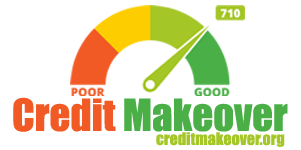Embarking on the journey of financial management requires meticulous planning and deliberate action, especially when it comes to handling monthly payments. In today’s rapidly shifting economic landscape, individuals are increasingly seeking effective budgeting strategies to gain control over their spending and secure their financial future. Engaging in proactive expense tracking and committing to structured payment plans are fundamental practices that can significantly enhance one’s ability to navigate monthly commitments without undue stress.
As consumers continuously grapple with various financial obligations, it becomes critical to implement a system that not only addresses current expenditures but also lays the groundwork for achieving broader economic goals. The key to this endeavor is not just in the tracking of expenses but also in the insightful analysis and strategic alignment of these findings with one’s financial vision, paving the way for a more assured and prosperous lifestyle.
Key Takeaways
- Understanding personal spending habits is the first step toward managing monthly payments effectively.
- Creating a clear budget based on financial goals allows for a better allocation of resources.
- Categorizing expenses into fixed and variable costs highlights opportunities for financial adjustment.
- The 50/30/20 budgeting method simplifies income distribution and ensures essential needs are met while saving for the future.
- Regularly reviewing account statements sheds light on spending patterns, aiding in financial decision-making.
Understanding Your Income Versus Expenses
Mastery of financial planning commences with a comprehensive grasp of one’s income and expenses. It’s a financial balancing act that requires precision and foresight. To attain this equilibrium, calculating your monthly net income is an indispensable step. This involves deducting taxes and other deductions from your gross income to establish the funds available for allocation towards your monthly financial obligations.
The cornerstone of budgeting techniques is aligning your expenses with your net income to prevent financial strains. A popular method adopted is the 50/30/20 rule, a budgeting technique that suggests an intuitive division of net income; it champions responsible and structured financial planning.
- 50% of net income should satisfy essential needs such as housing, utilities, groceries, and transportation.
- 30% of net income can be directed towards wants, which include dining out, hobbies, and other non-essential indulgences.
- The remaining 20% is reserved for savings or managing debts, fortifying financial health through prudent saving practices or debt reduction strategies.
Such an approach not only simplifies budget management but embeds a robust framework for maintaining a healthy financial state, warding off the perils of living paycheck to paycheck.
To further elucidate, a simple yet illustrative breakdown can visualize the application of this budgeting rule:
| Category | Percentage of Net Income | Objective |
|---|---|---|
| Needs | 50% | These are compulsory expenses that cover basic life necessities. |
| Wants | 30% | Expenses that constitute life’s pleasures, enhancing quality of life. |
| Savings/Debt Repayment | 20% | Allocations for future security and financial well-being. |
Always remember that while the 50/30/20 budgeting rule offers an excellent framework, the percentages can flexibly shift in accordance with your personal financial situation—highlighting the essence of customized financial planning.
Identifying and Categorizing Essential and Non-Essential Expenses
Effective budgeting is dependent on the clear distinction between essential and non-essential expenses. The goal is to maintain a balanced financial life by allocating income to support needs while also enjoying life’s pleasures within reason. The 50/30/20 budgeting framework provides a simple yet powerful approach to managing finances, ensuring that individuals can meet their necessary expenses while planning for the future and indulging in the occasional wants.
The 50/30/20 Budgeting Framework
In the realm of personal finance, the 50/30/20 rule stands as a tried and tested budgeting framework that helps individuals prioritize their spending. By suggesting that only 50% of net income should go towards essential expenses, it creates a financial safety net that covers the necessary aspects of living. Following this, 30% can be devoted to non-essential expenses—giving room for enjoyment without compromising financial health. The remaining 20% is designated for savings or repaying debts, reinforcing the importance of preparing for the future.
Distinguishing Between Fixed and Variable Costs
Fixed expenses are those costs that remain constant each month, such as mortgage or rent payments, car payments, and health insurance. These expenses are often non-negotiable and require regular, on-time payments, serving as pillars of one’s financial stability. In contrast, variable expenses fluctuate from month to month, such as costs for dining out, entertainment, and shopping. These expenses are inherently more flexible and can often be modified to adjust overall spending.
| Expense Category | Fixed Expenses | Variable Expenses |
|---|---|---|
| Examples | Rent/Mortgage, Car Insurance, Health Insurance | Groceries, Gas, Dining Out |
| Monthly Variation | Low | High |
| Budgeting Approach | Essential, prioritize for stability | Non-essential, adjust for flexibility |
By recognizing the distinction between fixed and variable expenses, individuals can employ smart budgeting tactics to better navigate their financial landscape. It paves the way for more informed decisions when it comes to where one can cut costs and how to reallocate funds for a more prosperous financial future.
Crafting a Tailored Budget Plan
Achieving your desired financial goals requires crafting a personalized budget plan that caters to your unique circumstances. This strategy involves meticulously analyzing your income and expenses to create a flexible yet structured financial blueprint that promotes effective budget management.
Adjusting Budget to Accommodate Financial Goals
Designing a budget plan that aligns with your financial goals is essential. Whether saving for a down payment on a home, preparing for retirement, or setting aside funds for education, your budget needs to reflect these objectives. Balancing long-term aspirations with short-term necessities is key.
Tools for Effective Budget Management
To aid in achieving your financial targets, several budgeting tools can be utilized. Budgeting apps and expense-tracking software, for example, provide granular insight into where your money is going, while also offering projections and tips to help steer your planning in the right direction.
“A budget tells us what we can’t afford, but it doesn’t keep us from buying it.” – William Feather
Modern budgeting tools offer an array of features, from customizable categories for expense tracking to alerts when you’re nearing spending limits. They serve as more than mere trackers; they’re a financial compass, guiding you towards your future fiscal landmarks.
| Budgeting App | Key Features | User Rating |
|---|---|---|
| Mint | Expense tracking, budget alerts, credit monitoring | 4.5 |
| YNAB (You Need A Budget) | Debt payoff tools, goal tracking, real-time access to finances | 4.7 |
| EveryDollar | Zero-based budgeting, monthly expense planning, debt tracking | 4.4 |
| Personal Capital | Investment tracking, wealth management, retirement planner | 4.3 |
By integrating these budgeting tools and apps into your daily financial habits, you can cultivate a level of transparency and control over your financial life that was previously unreachable. A successful budget plan is not static; it’s dynamic and responds appropriately to changes in your financial landscape, keeping you on track towards your defined financial goals.
Analyzing Monthly Financial Statements
For individuals seeking to get a clear picture of their financial health, monthly financial statements play a pivotal role. These documents, which include bank and credit card account statements, not only provide a snapshot of your financial status but also offer insights into spending patterns that could signal the need for adjustments. Proper expense analysis is instrumental in ensuring that your budget aligns with your financial objectives, thereby making every dollar count towards your goals.
Delving into financial statements can seem daunting, but breaking down the process can make it more approachable. Here’s how analyzing your periodic statements can bolster your fiscal foundation:
- Reviewing account statements to pinpoint recurrent expenses such as subscriptions or memberships, helping you decide if they’re essential.
- Identifying unusual or sporadic expenditures that suggest impulsive spending or unforeseen needs.
- Comparing income versus outgoing funds to ensure expenses don’t eclipse earnings.
- Highlighting opportunities for saving, presenting tangible avenues to invest in your financial future.
An effective way to decipher the data from your financial statements is by tabulating key expense categories. The following table exemplifies how you can organize and interpret this data to make informed financial decisions:
| Category | Monthly Expense | Notes |
|---|---|---|
| Housing | $1,200 | Includes rent, utilities, and insurance |
| Groceries | $300 | Monitor for fluctuations and potential savings |
| Transportation | $150 | Gas, maintenance, and public transport fare |
| Entertainment | $250 | Subscriptions, dining out, movies |
| Savings and Debt Repayment | $500 | Includes emergency fund contributions and credit card payments |
By regularly conducting an expense analysis of your financial statements, you empower yourself to make strategic choices that fortify your financial well-being. This tactical evaluation positions you to streamline expenses, augment savings, and overall, cultivate a financial environment where you can thrive.
Implementing the Right Budgeting Method for You
When considering personal finance strategies, the effectiveness of your budgeting method can be the difference between living paycheck to paycheck and achieving financial freedom. The budgeting process involves more than just jotting down expected expenses; it requires a thoughtful approach to income allocation that reflects your financial goals and lifestyle needs.
Selecting the appropriate budgeting strategy is pivotal. For those starting their journey into budgeting, simple methods such as the renowned 50/30/20 rule could pave the way toward disciplined spending. However, individuals with variable income or complex financial scenarios may benefit more from the intricacies of zero-based budgeting or the envelope system.
The table below outlines common budgeting methods alongside their main characteristics, helping you decipher which method aligns seamlessly with your financial blueprint:
| Budgeting Method | Key Features | Best For |
|---|---|---|
| 50/30/20 Rule | Simple allocation of net income: 50% to needs, 30% to wants, 20% to savings. | Individuals seeking a straightforward framework for balancing expenses with savings. |
| Zero-Based Budgeting | Assigning every dollar of income a specific purpose until the monthly budget “zeros” out. | Those who prefer detailed and proactive financial planning. |
| Envelope System | Cash-based budgeting by physically dividing money into envelopes for different spending categories. | People aiming to curb overspending and improve cash handling. |
| Automated Budgeting | Utilizing direct deposits and automated transfers to allocate funds to necessary accounts. | Busy individuals who value convenience and time-saving techniques. |
Remember, the goal is to manage personal budgets in a way that enhances your control over your finances, allowing you to responsibly fund your present while securing your future. Whichever method one chooses, it should be flexible enough to adapt to changing financial circumstances while strong enough to keep financial objectives in clear sight.
Tactics to Reduce Monthly Expenses
When looking to reduce monthly expenses, individuals have multiple strategies at their disposal to effectively manage and decrease their financial outlays. With rising living costs, it becomes essential to tackle major spending areas through smart bill negotiation, subscription management, and loan refinancing to secure lower interest rates and improve overall financial health.
Negotiating Bills and Subscriptions
Negotiation is a powerful tactic to decrease monthly expenses related to regular services. Consumers can often secure reduced rates by directly contacting providers for services such as cable, internet, or cellular plans. Companies value customer retention and may offer discounts when a customer indicates a willingness to switch to a competitor. Engaging in bill negotiation with utility providers and insurers can lead to similar savings.
Auditing subscriptions on a regular basis ensures that you only pay for services you actively use. With the current abundance of digital services, it’s easy to forget about recurring charges. By implementing strict subscription management, individuals can avoid the financial drain of unused memberships or services and repurpose those funds towards more impactful expenses or savings.

Refinancing Loans for Better Rates
High-interest loans can be a significant hindrance in achieving financial freedom. Loan refinancing is an effective method to receive more favorable interest rates, thereby lowering monthly payments and the total cost over the life of a loan. Refinancing options can apply to various types of debt, including mortgages, student loans, and auto loans, providing an opportunity to realign financial commitments with current market conditions.
| Loan Type | Original Interest Rate | New Interest Rate After Refinancing | Monthly Savings | Total Savings Over Loan Term |
|---|---|---|---|---|
| Mortgage | 4.5% | 3.5% | $150 | $54,000 |
| Student Loan | 6.8% | 5.3% | $60 | $7,200 |
| Auto Loan | 7% | 5% | $35 | $2,100 |
By exploring these tactics—notably, bill negotiation, subscription management, and loan refinancing, individuals can take meaningful steps toward reducing their monthly financial burden. Implementing these strategies requires discipline and a proactive approach but is certainly rewarded by the savings and peace of mind achieved.
Tracking Your Spending Habits with Technology
The integration of financial technology into daily life is revolutionizing the way individuals monitor their spending habits. With the advent of sophisticated personal finance apps, users are given the power to effortlessly track their expenses and manage their finances. These applications not only provide comprehensive budget tracking capabilities, but they also offer actionable insights to aid users in making informed financial decisions.
One key feature of these apps is the ability to automatically categorize transactions, thereby simplifying the budgeting process. This automation frees up valuable time, allowing users to focus on other important aspects of their financial journey. Additionally, real-time notifications on spending ensure that users stay aware of their financial choices as they happen, providing a level of control and awareness that was harder to achieve in a pre-digital era.
| App Feature | Benefit | Expense Tracking | Custom Alerts |
|---|---|---|---|
| Automatic Categorization | Streamlines budget creation | Yes | No |
| Real-time Updates | Instant awareness of spending | Yes | Yes |
| Spending Trends Analysis | Insights into financial habits | Yes | Yes |
| Push Notifications | Alerts before overspending | No | Yes |
| Expense Reports | Monthly financial overviews | Yes | No |
| Goals Setting | Helps in savings for financial targets | Yes | Yes |
Personal finance apps have drastically reduced the barriers to effective financial management, making it more accessible for a wider audience. Instead of relying on tedious spreadsheets or manual logging, these platforms offer a seamless and interactive way to stay on top of personal finances. Whether it’s managing daily expenses or working towards long-term financial goals, integrating these tools into one’s financial strategy can lead to more productive and enlightened budget tracking and control.
“Monthly Payments”: Keeping Track of All Recurring Financial Obligations
Managing monthly payments and recurring payments requires organization and attention to detail. With most individuals juggling various financial obligations, finding a harmonious balance to ensure punctuality and accuracy in remittances has never been more vital. Especially in a fast-paced world, the advantage of leveraging payment automation is clear, leading to stress reduction and improved financial reliability.
Automating Fixed Monthly Payments
For many, establishing an autopilot system for recurring payments can be a game-changer. Automating transactions like mortgage, utilities, or insurance premiums ensures that these critical financial obligations are never overlooked. Timeliness is rewarded not just by peace of mind but also by the absence of late fees and the potential for improved credit scores.
Setting Alarms for Irregular Payment Plans
While automation works well for fixed expenses, variable expenses still require personal oversight. For those payments that cannot follow a rigid schedule, like quarterly taxes or subscription renewals, setting up payment reminders is essential. Digital calendars and alarm apps have proven to be effective allies in managing these irregular payment plans, ensuring punctuality and preparedness for each financial commitment.
| Payment Type | Automation Strategy | Reminder Technique |
|---|---|---|
| Fixed Monthly Payments | Direct Debit Orders | N/A (Automated) |
| Variable Utility Bills | Autopay with Maximum Limit | Email Alerts from Provider |
| Annual Subscriptions | Annual Auto-Renewal | Calendar Notifications 1 Month in Advance |
| Quarterly Taxes | N/A (Requires Calculation) | Pre-Scheduled Quarterly Alarms |
Exploring Flexible Payment Options and Their Impact
In today’s financial landscape, consumers and businesses are increasingly seeking flexible payment options to enhance their purchasing power and manage their resources more efficiently. Particularly noteworthy is how these adaptations in payment strategies can have substantive effects on both immediate and long-term cash flow management.

The Pros and Cons of Installment Payments
One prevalent form of flexible payment is installment payments, which allow costs to be spread payments over a predetermined period, thereby making transactions more palatable for those wary of large one-time expenditures. While this approach undeniably lightens the immediate financial burden, it is important to weigh the advantages against potential drawbacks such as increased total expenditure due to interest rates.
| Benefits of Installment Payments | Challenges of Installment Payments |
|---|---|
| Enhanced cash flow | Potential interest and fees |
| Manageable payment sizes | Long-term commitment |
| Access to goods and services otherwise unaffordable | May encourage overspending |
How Payment Schedules Affect Cash Flow
Adopting custom payment schedules can significantly impact how individuals and businesses orchestrate their financial planning. A well-structured payment timetable can facilitate superior cash flow control, ensuring that obligations are met without undermining the ability to respond to unforeseen expenses or opportunities.
- Aligning payment schedules with income streams for better budgeting
- Enabling more precise forecasting and financial analysis
- Reducing the risk of cash shortages and financial strain
In conclusion, the integration of flexible payment plans can be a transformative movement for financial sustenance and agility. However, a meticulous and informed approach is required to fully leverage the benefits while mitigating associated risks.
The Benefits of Consolidating Payments
Amidst a landscape where individuals grapple with various forms of debt, consolidating payments emerges as a beacon of financial simplification. By merging multiple accounts into one, this strategy not only facilitates streamlining finances, but also promotes a structured path to debt consolidation. It’s a fiscal gamechanger, offering a sense of empowerment over one’s economic circumstances.
Streamlining Finances with Consolidation Tools
Financial management tools available today have revolutionized the way we approach debt consolidation. They are designed to gather the swathes of obligations we juggle—credit cards, student loans, and other lines of credit—under a singular roof. The result? A cohesive picture and an accelerated path toward achieving optimal financial health.
Impact on Credit Score and Financial Health
The journey toward credit score improvement is punctuated by consistent and timely repayments. Consolidating payments can significantly reduce the room for error by minimizing the number of payments to track and potentially lowering interest rates. This can not only alleviate daily financial stress but also cultivate a fertile ground for long-term financial health, empowering individuals to make strides towards fiscal robustness.
Adjusting Monthly Budget to Life Changes
When life throws a curveball, be it a career transition, marriage, a baby’s arrival, or any other significant life change, these events can have meaningful impacts on one’s financial landscape. Navigating through these waters involves a holistic approach to budget adjustment and proactive financial planning, ensuring that individuals and families are not left unprepared. It’s about recalibrating your expenses to maintain a balance that supports your new reality. Moreover, it’s about safeguarding the financial future with intelligent milestone planning.
Revisiting Budget Post-Major Purchases
Major purchases, whether it’s a new home, vehicle, or an investment in education, signal the need for a budget reevaluation. The priority is to realign financial obligations without compromising on essential day-to-day needs. This may entail adjusting discretionary spending or reassessing monthly savings to accommodate loan payments or additional insurance costs. Recognizing the trade-offs and making adjustments are critical steps in staying attuned to financial targets post-major expenditures.
Financial Planning for Future Milestones
Peering into the horizon, anticipating key life milestones can guide individuals towards sound financial health. Whether it’s planning for a child’s college fund, setting the groundwork for a business venture, or preparing for retirement, early and methodical financial planning is indispensable. Regular budget reviews and adjustments in light of upcoming significant life events can ease the financial burden and create a conducive pathway for achieving these milestones without monetary stress.
Creating a Safety Net through Planned Savings
Amidst life’s unpredictability lies the undeniable truth that a safety net is essential for maintaining financial stability. Establishing a robust emergency fund plays a pivotal role in any personal financial strategy, ensuring that individuals can withstand sudden economic swings without disrupting their overall financial well-being.
The cornerstone of financial preparedness is regularly setting aside portions of income for planned savings. It is this discipline that not only fosters peace of mind but also forges a path towards a secure future. Deploying a calculated portion of one’s earnings into different forms of savings—be it a savings account, investments, or retirement funds—is a disciplined approach to managing personal finance.

Creating this safety net is not a one-time event but a structured process, consistently fuelled by planned savings. Here is a practical way to approach the creation of an emergency fund:
- Determine the total amount needed to cover several months of living expenses, forming a concrete target for your emergency fund.
- Set up automatic transfers from your checking account to your savings account, ensuring that planned savings become a non-negotiable part of your monthly budget.
- Consider higher-yield savings options such as money market accounts or certificates of deposit for portions of your savings, which can increase the growth potential of your safety net.
While the concept of an emergency fund is not novel, the value it brings cannot be overstated. In moments of unexpected hardship, the presence of a safety net can be the difference between weathering a storm and facing a financial downdraft. Thus, the act of saving becomes an investment in one’s own future, a testament to the importance of financial preparedness.
Concluding, the journey towards establishing a safety net is marked by personal accountability and the foresight to prioritize planned savings. Begin this journey today, and take a tangible step towards securing your financial future.
Overcoming Challenges in Budget Adherence
Maintaining strict budget adherence is akin to navigating a complex financial landscape, where spending discipline and behavioral strategies become imperative tools to steer clear of budgetary pitfalls. Successful budgeting isn’t just about meticulous tracking; it involves a dynamic budget adaptation to life’s surprise expenditures and incorporating behavioral strategies to ensure consistent application of financial principles.
Unexpected expenses are often perceived as disruptive forces to a well-planned budget, yet with the right approach, they can be seamlessly integrated without derailing financial goals. The key to this financial resilience lies in the flexibility and foresight during initial budget formulation, anticipating potential variances in monthly spending.
Behavioral Strategies for Spending Discipline
Adopting various techniques to reinforce spending discipline is essential for anyone looking to preserve and enhance their financial stability. Simple modifications in purchasing behaviors, such as using cash for discretionary spending to physically feel the outflow of money, can effectively lead to greater self-awareness and spending control. Creating visual reminders of financial goals, setting up automatic savings transfers, and employing envelope budgeting are practical ways to curb the temptation to overspend.
Adapting Budget for Unexpected Expenses
When unexpected expenses arise, the malleability of one’s budget is put to the test. It is in these moments that having an emergency fund becomes invaluable. Yet, beyond this, the ability to reprioritize spending, cut back on non-essentials, or temporarily increase income sources ensures that these surprises don’t lead to long-term financial setbacks. Budgeting then becomes a continuous process of assessment and adjustment, proving that adaptability is just as crucial as adherence.
By incorporating these practical approaches to oversee unexpected expenses and cultivate unwavering spending discipline, individuals can experience a newfound command over their finances, steering towards a future where financial surprises transform into manageable occurrences within a well-adapted budget framework.
Conclusion
In the pursuit of financial independence, mastering the art of managing monthly payments stands paramount. It is not simply about making ends meet, but about employing smart budgeting practices that pave the way for a secure financial future. By delving into the relationship between income and expenses, individuals empower themselves with the knowledge needed to construct a robust financial plan.
Practical budgeting frameworks, such as the 50/30/20 rule or zero-based budgeting, are not just theoretical models but are essential tools that aid in allocating funds wisely. Furthermore, the adoption of current financial technologies for tracking and categorizing expenses enables individuals to maintain a clear, real-time overview of their financial landscape. Key to this approach is the flexibility to make informed decisions about one’s financial resources; opting for either an aggressive payoff strategy or a measured payment plan when appropriate.
As one continues on the journey toward money management mastery, it is crucial to periodically revisit and refine the budget. This ensures it remains aligned with changing financial circumstances and goals. After all, achieving a state of financial well-being goes beyond knowing where each dollar is spent – it’s about harmonizing daily spending with long-term fiscal ambitions. The reward of this diligent attention to detail and consistent revision is nothing less than a fortified financial foundation, capable of supporting one’s aspirations now and far into the future.
FAQ
How do I begin managing my monthly payments effectively?
Start by understanding your personal spending habits and create a budget that matches your financial goals. Regularly review your account statements to categorize your expenses and prioritize your spending to ensure you are making the most of your income.
What’s the importance of understanding income versus expenses?
Knowing the difference between your income and expenses is crucial for financial planning. It helps you create a feasible budget, ensuring that you cover all necessary payments without overspending, which can lead to financial strain.
Can you explain the 50/30/20 budgeting framework?
The 50/30/20 rule is a simple budgeting framework that divides your net income into three categories: 50% for needs, 30% for wants, and 20% for savings or debt repayment. This can help ensure that essential expenses are met while also allowing for personal enjoyment and future financial security.
How do I distinguish between fixed and variable costs?
Fixed costs are recurring expenses like rent, mortgage, or insurance that are unlikely to change each month. Variable costs include spending that can vary from month to month, such as dining out, shopping, and entertainment, and provide an opportunity to make adjustments and save money.
What are some tools for effective budget management?
Budgeting tools and apps can help manage your finances by tracking your expenses and categorizing your spending. These tools offer features such as real-time spending updates, budget notifications, and reports to help you stay on top of your financial goals.
What are the best methods for reducing monthly expenses?
You can reduce your monthly expenses by negotiating bills to secure better rates, cancelling unnecessary subscriptions, and refinancing loans at lower interest rates. Frequently reviewing your subscription services can help prevent overspending on services you may not need or use.
How does technology help in tracking spending habits?
Technology, in the form of budgeting apps and financial software, can automate expense tracking, categorize your purchases, help to identify spending patterns, and alert you in real-time to ensure you maintain your budget.
How can I manage irregular payment plans efficiently?
For less consistent payment schedules, setting up alerts or calendar reminders can help you track when payments are due and prepare for them in advance. This can help you to avoid missed payments and potential late fees.
What are the pros and cons of installment payments?
Installment payments can make higher-cost items more manageable by dividing the total cost across several months. While this can help with immediate cash flow, it may result in additional costs through interest over time.
Can consolidating payments improve financial health?
Yes, payment consolidation can help streamline your finances by bringing multiple debts into a single payment, possibly at a lower interest rate. This simplification can make management easier and may have a positive effect on your credit score.
How should I adjust my monthly budget after a significant life change?
After a significant life change, such as a major purchase or a change in income, it’s important to review and adjust your budget to ensure it meets your new financial obligations. This keeps your finances aligned with your current situation and goals.
Why is creating a safety net through savings important?
A safety net in the form of an emergency fund or savings ensures you’re prepared for unexpected financial hardships. Regular contributions to these savings can provide stability and peace of mind.
What are some behavioral strategies for maintaining spending discipline?
To maintain spending discipline, set achievable financial goals, reward yourself for smart spending decisions, and be willing to adjust your habits. Consistently reviewing your budget can also help to keep your spending on track with your financial targets.





